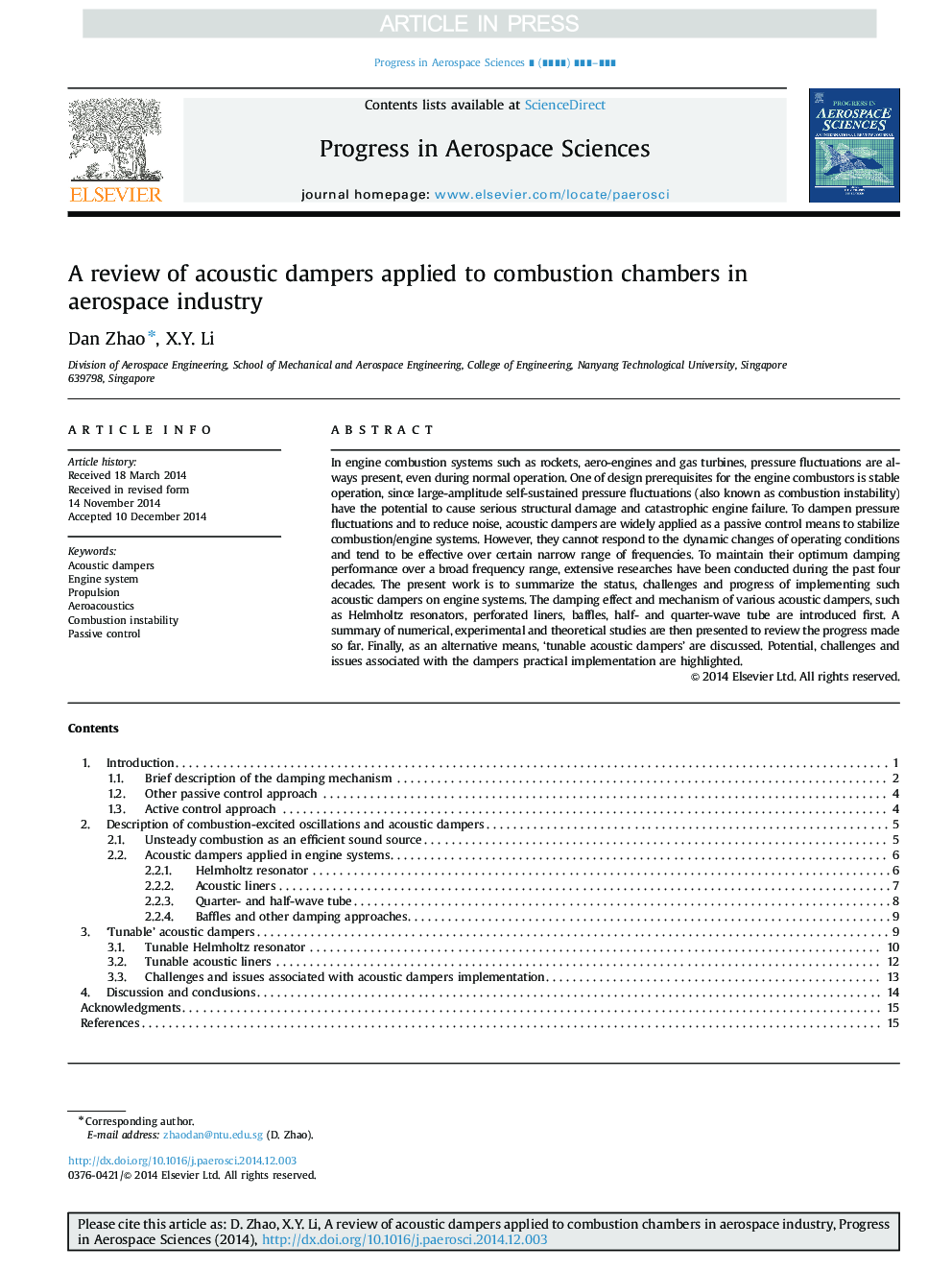| Article ID | Journal | Published Year | Pages | File Type |
|---|---|---|---|---|
| 1719187 | Progress in Aerospace Sciences | 2015 | 17 Pages |
Abstract
In engine combustion systems such as rockets, aero-engines and gas turbines, pressure fluctuations are always present, even during normal operation. One of design prerequisites for the engine combustors is stable operation, since large-amplitude self-sustained pressure fluctuations (also known as combustion instability) have the potential to cause serious structural damage and catastrophic engine failure. To dampen pressure fluctuations and to reduce noise, acoustic dampers are widely applied as a passive control means to stabilize combustion/engine systems. However, they cannot respond to the dynamic changes of operating conditions and tend to be effective over certain narrow range of frequencies. To maintain their optimum damping performance over a broad frequency range, extensive researches have been conducted during the past four decades. The present work is to summarize the status, challenges and progress of implementing such acoustic dampers on engine systems. The damping effect and mechanism of various acoustic dampers, such as Helmholtz resonators, perforated liners, baffles, half- and quarter-wave tube are introduced first. A summary of numerical, experimental and theoretical studies are then presented to review the progress made so far. Finally, as an alternative means, 'tunable acoustic dampers' are discussed. Potential, challenges and issues associated with the dampers practical implementation are highlighted.
Related Topics
Physical Sciences and Engineering
Engineering
Aerospace Engineering
Authors
Dan Zhao, X.Y. Li,
